S2:E48 Steve Stencil - The Software that is Transitioning Contractors in the New Normal - PODCAST TRANSCRIPTION
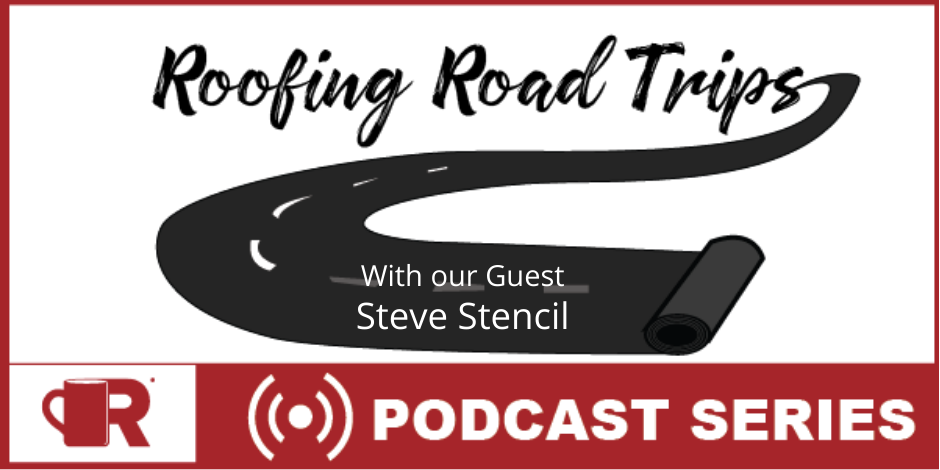
Editor's note: The following is the transcript of an live interview with Steve Stencl, the CTO of Leap.You can read the interview below or listen to the podcast here.
Heidi Ellsworth:
Welcome to Roofing Road Trips with Heidi. Explore the roofing industry through the eyes of a longterm professional within the trade. Listen for insights, interviews and exciting news in the roofing industry today. Hello, and welcome to another Roofing Road Trips with Heidi. I'm Heidi Ellsworth with Roofers Coffee Shop, and we are so excited today to have a very special guest from Leap. And it is Steve Stencil, the founder and CTO of Leap. And what they are doing, this company has really brought technology to the forefront of the sales process and overall in roofing companies and home improvement overall. So we're going to talk today about sales and we're going to talk about technology and how the two need to go together. But before we start, welcome to the show, Steve. It's nice to have you.
Steve Stencil:
Thanks for having me, Heidi.
Heidi Ellsworth:
That is great. Steve, you know what? I would love it if you would just introduce yourself and kind of talk about a little bit of your background and how Leap came into. You were the founder, how did it all get started? What was your inspiration? Can you share with our audience?
Steve Stencil:
Yeah, so my background is actually sales. I started my first sales job I was 16 years old working at Best Buy, one of my favorite jobs I've ever had. And that's where I got like my knack for technology. I worked in the computer department, just love technology, all the new stuff that was coming out we were selling. I had first access to it. And I eventually got into the home improvement industry by way of sales. My buddy who I worked with at Best Buy, he started a home improvement company selling fences and decks with his father-in-law and he recruited me to come work for him. But in our state, I'm in Maryland and in our state, you have to get a license, kind of like a real estate agent to do in-home sales. And I went to go get the license and I failed the test the first time.
And what I found that I could actually, I believe work under the license of the company for a certain amount of time while I learned the ropes, I guess. And so I went to work for a different company called Noodle Comb Design out of Baltimore Maryland, and basically just to learn the ropes and I was very good at it. Right out of the gate, very first month, I think I got second place in the company. And then each month after that I mean, I just was killing it. It was a life-changing job for me. It was amazing the amount of money you make and the hours that you work were minimal compared to make that money somewhere else. So right out of training, I seen all the inefficiencies.
I'm like, "Man, I can definitely use some technology here." So I fired my laptop up. I opened up Microsoft Excel and I started taking all of my price guide information that they had used me to train to work up the pricing for roofing and windows and I put it all into a spreadsheet. So then when I was running to my appointments, I was working on my measurements like normal on a clipboard, but then I would fire up on my laptop at the kitchen table and I was sort of typing in all of my measurements and it would spit out to me the price. And then I started layering in financing. So I could slide the plan that the customer is interested in. And I had like three or four plans that we were allowed to sell and I would select the one the customer is interested in on my spreadsheet and it would calculate the monthly payment and how much of a fee I had to pay.
And then it would give me my minimum, make sure I was within the guidelines of where the company says I could sell the job and I used that for about a year and a half. And then me being a techie, this is around the time the iPad two had came out. And I remember my sister-in-law had purchased the very first iPad. I was like, "Oh, I think it's pretty neat." But I really didn't have a use for it. The second one came out and that's the first one that they had the camera on it. I was like, "Oh man, that will be neat to do the FaceTime calls with other people who had an iPad." So I purchased one, it was just an excuse to buy new technology. One of the things that I wanted to use it for was work.
So I was like, "Hey, I know I'll take, instead of firing my laptop up in the house every day, I'll fire my iPad up and it's just much more convenient to slide that in my briefcase." The plan didn't work because the Microsoft office did not exist on an iPad then.
Heidi Ellsworth:
Right. I remember that.
Steve Stencil:
So my spreadsheet, I couldn't put on. So Apple has their own versions of Excel called Numbers. And I tried to rebuild it in that, but I was just so used to in high school, I'd learned how to use Excel and that's what I was used to using. And it just, it didn't work. So as a lot of people, roofers, that was the primary product that I sold was roofing, exterior remodeling in general, but 70% of what we sold was roofing. And it gets really slow in the winter time. So there were times where like I'd run two appointments in a week, sometimes it'd be I wouldn't run an appointment in an entire week, which I was in the industry for seven and a half years. I was able to save money and I actually looked forward to those times to take a little bit of time off.
But there was, my wife was still working at the time and she would go to work, kids were in school and I'm just bored. I'm like sitting home, everybody, all my friends are at work and everything. I'm like, "Well, what do I do? I have no leads to that run." So I would get on my computer and I wanted something to do with my laptop. So I downloaded a book on my iPad for introduction to computer programming. Up until this time I had zero knowledge of computer programming, nothing, no school, nothing.
And it just said introduction to computer programming and I still remember a book cost $7. And I just started, I had my laptop sitting next to me. I had my iPad with the book on it and I'm just going through and I still remember in the beginning of book it says, a lot of it's not going to make sense. So what's introduction? In the beginning it said this is a book for if you have no knowledge. I was like, "Perfect." [crosstalk 00:05:56]. And yeah, so as I was typing the code and it could have been hieroglyphics. I had no idea what it was, but in the book it said, just keep filing through chapter after chapter. There was a follow-up book two and I bought that one. And then it got to the point after about two, three months, I knew enough to be able to get an app installed on my iPad and make it do something. Like it was very, very basic, but I knew enough.
So at the end of it, it said, now do something, build an app that you would use personally, even if it means rebuilding something that already exists. So the first idea that came to mind was to build something to track my gas mileage because I was driving a lot through appointments and stuff. And I started to build a little app like that, but then I went on the app store and I was like, "Man, there's so many things. I'll never get to what these apps are. They're tracking your mileage and when you replace your tires." I had a whole thing on it. So I was like, "I know I'll replace the functionality of my spreadsheet on my iPad. So I can finally get rid of this Excel sheet." And that's really where Leap the ...
So the idea of a business was not born there. The idea of a business was born years later. The idea was like, I never thought of myself as a computer programmer. It was just a hobby that I did and I knew enough to make my life easier as a sales rep and that's really where the idea came about. I started building the app, making it better and better as I was running appointments. And again, there was no intentions on anyone else to use it, no company, no other sales rep was supposed to use it. It was a matter of fact, I was embarrassed. They used to make fun of me because they were like, "Oh, Steve and his app or whatever." And the only thing I would fire back with was I was consistently top of the sales board. If I wasn't number one, I was number two.
So I was like, "Hey, once you can get on top of that sales board, then you can make fun of my app, but until then ..." But then eventually they couldn't ignore it because as you know, sales there's turnover and as new sales reps were coming in, they would go through training and they would see how the company was doing with the old fashioned way, the measure sheets, clipboards, we're doing all the long math and having a price book and flipping through it. And they would spend sometimes two weeks training sales reps how to do all the paperwork, how to measure everything, how to price everything, what mistakes not to make, what to look out for. But then they will come out of training and because I was the most senior rep, I had the highest numbers consistently. They would always do ride alongs with me.
I mean, towards the end, I mean, I think the last two, three years I had a ride along with me on every single lead I've ran. So it was just like, it became, it's like, why don't I have a ride along? Like what happened? But yeah, so they would come out of training and they would do ride alongs with me and then see that I was doing a completely different than the way that they were learning in training. And then eventually the company that I worked for, they had about 30 to 40, sometimes 50 sales reps, depending on the season. They covered six states in the Mid-Atlantic area from like New Jersey all the way down to like Virginia and DC. And yeah, so we would, we created a group chat.
The company started taking notice of what was going on and I kept making it better and better. And then like, I would turn it in, my pricing was always right. I'd never had deals below minimum. Yeah. I never had deals below minimum. Like some reps, they would forget to carry the one or whatever it is when they're doing their math and they'll turn it into the owners below minimum, my pricing was always consistent. My contracts were always 100%. They were readable, right? Because all the other, you have 50 sales reps, everybody has different handwriting. Some people have really good stuff and really good details, other people forget stuff. So my contract was always accurate. My results were always uploaded and they were always in the correct format with the marketing and sales and the production. They were always the same every single time.
And I liked that, I kept making it like that because the company was constantly, I'd get an email when we were doing it the old fashioned way, hey, you forgot to update your results or hey, your results didn't have the last price offered or your contract didn't have the color, just human error that you make day to day running as a sales rep. And any of the times I would make these mistakes or even another rep would make the mistake and I'm like, "Hey, I never want to make that mistake." I had a little notes app and I would write it down in my phone. Anytime I had some free time, I would figure out a way to make my app prevent that from happening. And there's real world scenarios. Like not just making mistakes, but efficiencies.
Like when you go out there and you only have so much time with the homeowner. And we were a one-call close company. So if I didn't sell it that day, they had a whole rehash department where somebody would come in behind me and sell it. So if I didn't sell it that day, I didn't get the to sell it. So if I go out to the house and I don't want to spend three hours in the house, I don't even want to spend two hours in the house. I want to be super efficient. I want to build rapport, I want to spend all my time building rapport with the homeowner, overcoming objections, figuring out what their needs are and closing the deal. I don't want to have to spend time working up the price. I don't want to have to spend time writing up a contract. All that stuff can be done with technology.
And that's really what as I was running these leads, these real world scenarios, like a perfect example is you have a customer says that it's kind of like the lady that can't make up her mind where can you give me a person, your top of the line roof? And I'm like, "Yeah, sure. Here's my top of line." Well, what about the middle of the road? Okay, well, here's the middle of the road. Okay. Well, what about the top of the line ridge vent, but the middle of the line shingles and the lower end this, and you get those customers where you end up giving them 25 different configurations. You don't remember what all the configurations were. A lot of times you run out of time, but [crosstalk 00:11:47] just email it to me or whatever.
So those would happen. They're few far and in between, but they happen. And if you're using technology and you're able to just quickly calculate those numbers and spit them out to the homeowner, you have much more time that you can build rapport and overcome the objection. But what about this? Okay. Well, it's 12,000. Does that fit your needs? Blah, blah, blah, whatever it is. And you just overcome it, then eventually the company adopted ... Go ahead. You have a question?
Heidi Ellsworth:
No, I was just going to say, I just real quick on that comment, I've been in sales most of my career too, and that is brilliant what you just said, because how many times do you give somebody a proposal and then they come back and they say, "Well, can you just tweak this and can you totally rewrite the proposal for me again?" And it goes over and over and you're right. You lose total track of, okay, where were we in the beginning? And you got to go back. So yeah. I'm sorry. So keep going. I just wanted to say yes, I've been there.
Steve Stencil:
Yeah. And then so to piggyback on that, like the measure sheets, I remember I'd have a clipboard and I was running, especially in the busy season like two, three, four appointments a day. And I don't make it back to the office, but maybe once or twice a week at the most to turn all of my stuff in. So I will go out and sell deals, have contracts sitting on my clipboard that didn't make it back to the office sometimes three or four days later especially if there's a weekend in between. So just nothing happens. The customer writes me a check and nothing happens until I turn that in. Using technology, that information goes right into the system within minutes. Like I mean, it's there, as soon as the customer's done signing it.
Your measure sheets, like I remember you were talking about, you just mentioned how I said you lose track of what you pitch them. They call you back, you have no idea what you left them at. And then I would try flip through to find my measure sheets, but that might as well be hieroglyphics as well, because all the different numbers and stuff I forgot how I got to the number that I presented them, what combinations of products, et cetera. So technology kept track of all that for me. And I was able to have everything I needed at my fingertips up to date information, my pricing was always updated.
Heidi Ellsworth:
That is, I just have to say that is so visionary because really when I think about where you were with just how many salespeople we all work in Excel. To this day, I still am doing Excel. But to take that and think about, at that time of going, hey, there's a better way to do this and visualizing how it could be an app and how you can put it together. And you were doing it for your own business, so you could have more sales. That's just really cool. And you just don't hear that too often. That's awesome.
Steve Stencil:
Yeah. So I was doing it selfishly really like I was just doing it because I was lazy and I didn't want to do all the paperwork. Sales reps, it's funny, I'll use always with a quote. I think it's Warren Buffet. There's a quote where he says when interviewing people, one of the best traits that he looks for is being lazy. He says because if you want to have the most efficient way, if you want to find the most efficient way to do something, you give it to the laziest person on your staff and they will find the most efficient way to do it. And that I can relate to that because I am naturally lazy. I mean, I think all humans are naturally lazy. That's why we find the easiest way to do things, but I am sales rep and sales reps naturally are lazy.
I just am and I just wanted all the stuff that was repetitive that I was doing as a sales rep, I want the technology to do it for me. And then I could do what I consider myself good at, which paid the bills, which was closing deals. And closing deals, you can use technology to an extent, and I can elaborate on that, how we do that, how you use technology to help you increase your closing percentage. Because when I started adopting it, my closing percentage was an average. I wasn't, like I didn't close tons of deals. I wasn't on the top of the list on closing percentages. And remember we were one call closes. But what I was able to do was create more value. I had a higher dollar per ticket initially before I started using technology.
My closing percentage always hovered before I started using technology to close every deal, hovered around 30 to 35% of the leads that I ran. I would close on a one call sitting. By the time I was done the last two years, which I was 100% digital. I was using Leap. At the time it wasn't called Leap, it wasn't a business. It was just the app. I was using it, my closing percentage, I ended up 47% the last two years that I was running. So from like 33, 35% to 47%, because I was ... There's a lot of things in our software that create value and I can elaborate on that as we go through this.
Heidi Ellsworth:
Yeah. Well, let's go there. Let's talk about, okay, so you have this awesome app. You're 47% closing. Things are going great. How did you go from there to starting a business?
Steve Stencil:
Yup. So the company that I worked for started adopting it. So they were like, "Okay, Steve's on to something here. Let's get a couple of sales reps and let's see how it goes." Rightfully, they were a little bit cautious of it because this was an app I created in my bedroom, right? I mean, they're a I don't know, 40, $50 million company. And they're like, if I get hit by a bus, what happens if the whole company is working this thing? So I get it. They're a little bit cautious at first to get other reps using it, but they've seen the value like, hey man, this could really change the way that we're doing business. And at first I think we got like five or six other sales reps, the senior guys that know what they're doing when we told them.
They knew about the app and plus I had credibility with everybody. I was already using it, so they wanted in on it. And so they adopted it and they took it seriously and we gave them, look, there's going to be bugs. There's going to be things that you can't do in it. Just let me know what it is. I've been using it this long. Here's how I use it. And I was like giving them tips and then they would listen. I was a producer. I was making a lot of money and I was like, "Look, this is the way I'm doing it." And so they started doing it too. But then they started giving me other feedback like, "Hey, can change this? I was trying to pitch this and this didn't happen."
And we created a group chat with about like eight of us in there and they would just give constant feedback. Hey, I ran appointment today and I was unable to price a window with this configuration or whatever it was. I said, "Okay, I got it." And I'd write a little list down and a week later, a month later or whatever it is, okay, update your iPad and now you'll be able to do what you said there. And then there were things like I remember just little things that will come up. I remember this one guy, his name's Matt, and if he's listening to this, he's nodding his head. He knows exactly who he is. And he was a monster closer. He was one of the guys who just closed. It was unbelievable the talent that he had to close. He's still in the industry, still sells deals at a very high closing percentage.
But he sold everything at minimum or below minimum, meaning like the company had a floor price that that you allowed to sell it. And if you sold it below the floor price, you got paid nothing on it. So Matt would go and he would close. I remember the one month, I think he closed 86%. He had $180,000 I think in sales and all but I think 30,000 of them were below minimum. So this month he had an 80 some percent. Yeah. So I was like, "Okay, I got a fix for this." And I says, "Matt, you're going to update your app tomorrow. I'm going to have an update in it. You're going to update your app tomorrow. I'm going to fix this problem for you." And I didn't tell him what I did, but that is now a feature in our app where I adjusted Matt, only Matt's discounts so that he can only discount say 10% where everyone else can discount 20%.
So when Matt was in the house, he would just quickly put up his numbers and he'll just, all in his head that he had to sell at minimum in order to close the deal. Well, his minimum was 10% higher than everybody's else. So it was a cushion that we tricked him into selling it for. It was like the biggest pay raise that he got. So there was just like these little things that you have to be in the industry and you have to really run into these scenarios in order to be able to account for it in a software. Because there were companies that like now today, they have apps for ... a lot of the good ones are manufacturers. Manufacturers I guess they have some money or some budget that they can put towards developing an app. One of the ones, first one that comes to mind is the ProVia app, which we actually have an integration with.
They're a door and window manufacturer and they have a beautiful application that allows you to customize the windows and doors in it. But if I only sold ProVia windows and doors, that would be the perfect app, but I sell so many other products. There's so many other things. I sell financing. I need contracts. I need all kinds of stuff that I can't just use their app. So in order to get something that sales reps and interns, just companies, business owners, sales managers, an app that was grown from the inside out instead of the outside trying to get in, I think it's really what separates Leap from anything else that's available in the market.
Heidi Ellsworth:
Yeah. And the fact that and you just said, you can integrate with some of those great apps that maybe are only doing one thing, but you're able to integrate. So are you integrating with a lot, I mean, open source, being able to integrate with different other apps out there or technology?
Steve Stencil:
Yeah. So we have dozens of integrations. So when I first started out, the way again, going back to like what was I using it for as a sales rep? I had a couple apps that I would use, ProVia was one of them. So when I was pricing my windows and doors I would use the ProVia app. When I would offer financing, we use a lender called Service Finance, and they had their own app and we would submit applications through it. And we used a CRM called Market Sharp, and we would connect with them to get over lead and push over lead information. And then I would use my app for a couple of the pricing. So between those four pieces of software, that's what I was using. But after I got my app working to the point where, hey, covered all my needs as far as working up the price, I want to now start plugging into these other three things that I have to do double data entry in every time I want to use them.
I have to open up the Service Finance app, retype all the customer's info. So the first one I reached out to Market Sharp and said, "Hey, I'm working on this tool, blah, blah, blah. I'd like to connect it." And they were very helpful. We did a demo. I showed them what we were working on. They said, "Oh my God, this thing's amazing." And this is a perfect segue and how it actually became a business. So I show them what I was working on and how the company was using it. And the company that I was working for was one of their power users. Like they used every aspect of it. So they were like, to this day, they use them. And they were like, "Okay, well yeah, you can connect to this." And then I had all my appointments going through my app straight through the CRM.
So I didn't have to anymore log into the CRM, get my information out, type it into my app. And then the way that I actually did it, I created a little button and hit copy, and it would copy all my results to my clipboard on my iPad. And then I would open up the Market Sharp website and paste all my results in. But then I created a direct pipe that allowed the push and pull information direct to Market Sharp. I reached out to Service Finance, the lending company, told them what I was doing and integrated all my lending in it. So I was able to just submit financing directly to them. And then same thing with ProVia. I got all that done and I was like, "Okay. The only thing I can't do is get the information from my ProVia app into my estimator app."
And then I reached out to ProVia. They were very helpful too and supportive and then hooked in their app into mine. And then it then got to the point, I was like, "Okay, it does everything I need it to do. All of the sales that I'm doing, all the leads I'm running, it accounts for everything." All the sales reps are using it. It was adopted company-wide. And at that point it was ... yeah, it got to the point where I was like, "Okay, there's not really much more I can add to this thing." And then I started getting requests from third parties. So Market Sharp reached out to me and said, "Hey, we keep getting requests for an app just like what you have demoed to us. And the way that you have integrated, you have any interest in selling this thing to other companies? We could give you leads."
And I was like, "Oh, I'll give it some thought, whatever." I had other sales reps who used the app working with me and then they would quit and go work for somebody else. And then I will get phone calls from that company saying, "Hey, this Jeff came over. He used to work with you. And he's talking about this app and do you have any interest in bringing it over here?" I'm like, "Well, no, I can't do it. It only works for this company." And it was a lot, I mean, I was supporting this thing in between running appointments and password resets, like we had 60 people using it. Password resets, any crashes, any bugs, like I was fielding all of these things. I wasn't getting paid for it. It was just, I was doing it for fun. I got a kick out of people using it.
And then it got to the point where I remember I met with this one guy I used to work with, he went and worked for a company and he was very persistent. He's like, "Hey man, you just come up and meet with the owner of the company. He just wants to talk to you about it. Blah, blah, blah." I was like, "All right." We went up. I think we had lunch. I met, I demoed it to him and I told him like I told everybody else. I was like, "Look, it's just something that I can't. It would be such a heavy lift to get it to work for somebody else and I'm supporting 50, 60 users already. And I don't want any of the data to get mixed up. I just built this thing in my bedroom." I was giving them all the excuses of why I couldn't do it. And he's like, "Well, what if I gave you X dollars?" I'm like, "I'll get started working on it tomorrow."
Heidi Ellsworth:
I love it.
Steve Stencil:
Yeah. So I went back to new look and I said okay. I had saved up enough money that I could give it six months and I said, "Okay, I'm going to give this thing a shot. I already have an app that is working and it's proven to work. It has completely changed the company that I worked for. They went 100% paperless." When I started working there, they had all these file cabinets up on the wall and separated by years, they are all gone. They eventually took all those files and hired a company to come in and scan every document and put it into cloud storage. And all those files are completely gone and that company does 100% of everything. They're using it for field management, repairs, like they're using for everything, site inspections, et cetera. They use the app for everything. And then yeah, I went back to them and I said, "Hey, I'm going to give this thing a shot. I'm going to start selling it to other companies and we'll see what happens."
And I asked them if they wanted to be a part of it, be investors in it, needed some capital to get it moving. And so they're like, "All right. Yeah, let's see what happens." And right out of the gate, we had ... So that's the thing. We're still technically a startup. I think we're four years old now. But we're different in a sense because when we went to market, we weren't an idea. We had an app that was already built. It was six years old. It already had, it's already been through the paces. It's already been developed. It's already proven to work for a fairly large to scale. It's already proven to work to scale. We already had customers, so the people who are calling me, I had five or six of them that called me throughout in the past year or so asking to use it. So I just reached back out to them say, "Okay, now you can buy this thing."
So I immediately had revenue like literally within the first three months we had revenue coming in. Yup. And then we went and we got our first office and we hired our first employee, which is still with us. Her name's [Kainot 00:27:25]. Shout out to Kainot if you're listening to this. And then we hired our COO, his name is Walker Heat, but he actually comes from like the app space, specifically in the payments world. And because at the time, I was a good sales rep and I knew enough about the industry and enough about programming to get an app, but we've never built an app company. We don't have software, et cetera. So we brought on Walker, which really helped us just blow the thing up. And I mean, it now today, we're I don't know, 6,000 some users that are daily users across the United States.
Heidi Ellsworth:
That's excellent. Wow. Yeah. What an amazing story. I love it. I love this journey that you took. And I mean, not only just really being an industry and knowing how to sell, knowing how to work in home improvement and especially exteriors, but then taking your own initiative to learn how to make your own job better using technology. That is excellent. That's what everyone needs. I mean, really right there. So today in Leap, tell me about what's going on today. Like you said, you have 6,000 users and how different is the app that everyone is using right now to that app four years ago when you went into the business?
Steve Stencil:
Yup. So I mean, it's almost a night and day difference. I mean, there are some things in the app, it makes me want to go back and do in-home sales because there's like features in it that I'm like, "Oh man. If I had that then my closing percentage would be 75% because of some of the things you can do." But today, Leap is like so when I was using it, I had those three integrations. That was it. That was the only three that I needed. Today, we have integrations, we're close to I think it's 97 credit card processors. So most companies who can, they can just bring their own credit card processing and put it straight into our app. And we integrated that with our document engine, so that as you're filling out your contracts, you can have the credit card processing just built right into it.
We have, I think, six or seven CRMs. So at the time we were just integrated with Market Sharp. Now we integrate like six or seven of the leading ones in our industry. We have measurement integrations, which is really good for roofers. EagleView, we have a direct integration with them, so we can have their reports auto-populate the measurements that generate your estimates. And all the photos that are used on the reports can generate, auto-populate or generate your proposals and your contracts. And we download the report as part of like your pitch materials. So when you're showing the prices and the estimate, the proposal to the homeowner, you can include the EagleView if you wish as how you arrived to your price. So that was something in our industry, like you're a salesman, if you're out there, you're considered a salesman to the homeowner, right?
And there's always like a little stigma. Nobody ever wants to really deal with salesmen. There's always a stigma with it. And then in home improvement in general, there's a slight stigma because you always have the person who you hear about that got ripped off or the person took their deposit and never came back. And there's just a little bit of uneasiness with homeowners. And I was aware of this as a sales rep and when I would go into homes, I always just like wore a nice polo shirt or sometimes a tie depending on the weather to just make my image. When I came up to the front door, I just presented myself in a way that, hey, I'm trustworthy. And when I would pitch my price, like if I just imagine using one of those EagleView reports, I used to have to do all my measurements by hand. We weren't using the EagleViews to work up the price.
And if I could use an EagleView to show the homeowner, hey Mr. and Mrs. Jones, this is how I'm coming up with your price. This is your house, a picture of your house, aerial view. This is a third party measurement, here's the exact linear feet of everything. And all of this is compiled into my app that then spits out a price. So I am not making up the number. I'm just bringing you the message and providing them a way to buy it and payments and stuff like that. It will be just such an easier, like we have companies who are doing exactly that today.
And I'm just thinking, man, if I was a sales rep and had that, that's like, that's game changing because there's not many companies who are doing that right now. They're using EagleViews and Hovers and Roof Scope. They're using those types of things after the sale for production, like ordering the job. Right. So you could get a lot more value out of your reports. You can use them before as part of your selling process say, "Okay, Mr. and Mrs. Jones ..." And it just adds a lot more credibility. [crosstalk 00:31:59] go ahead.
Heidi Ellsworth:
You know Steve, it does. No, you're making my day because I was actually part of the EagleView startup. And I sold what you just said is exactly what I was talking to contractors about I don't know, seven, eight, nine years ago, 10 years ago now. And so to hear you say it is just awesome because it is, I think, and today when EagleView first came out and when you were first bringing it into Leap, it was just so new. But now today, it's the thought of not using that as part of your sales process I think is crazy. It just is so to able to have something like Leap and to have all those technologies that are integrating into it in front of a homeowner, that's a differentiator. That really makes a difference.
Steve Stencil:
Yep. Yeah. And customers are starting to expect this, right? So we're at a point where like our industry, the home improvement industry is one of the only ones that's, only one I can think of that's not tapped out in technology. Like everything else, I mean, my wife goes, she will just telling me she was at Walmart and they have an app and she just scans the barcode with her phone to pay. You don't even use a credit card or anything anymore. Like you're buying everything on Amazon. Amazon is not as big as they are because they're the cheapest, they're the biggest they are because it's just convenient and it's easy and it's technology and people will do it on their phone. Home improvement industry is one of the only industries where people are still running around, writing up a fairly large purchase on carbon copy contracts or hand writing it all.
So homeowners are starting to expect this type of service because millennials are like the new income. They're new home buyers. They're the ones starting to buy these types of things and they have never seen a carbon copy contract. So the guy comes to their house and that whole buying process is just unfamiliar to them. The first thing they're doing is they're going on the internet or looking up stuff for roofing. So as soon as they have to invite somebody to their house, like that is already foreign for really anybody. It's already a foreign buying process. So doing things that they're familiar with, sending their proposal to them electronically, sending their contract electronically, a DocuSign signature, especially in today's environment, right? Like with every COVID thing. Going digital is something that at some point, if you fast forward five years, you fast forward 10 years, somewhere probably in that timeline, our industry is going to ... you're going to have to adopt technology or you're going to be left behind because customers are just going to expect it.
And the companies that are coming out giving them quotes and proposals using technology are just going to look so much more professional than the people are coming out doing it the old fashioned way. And right now we're in a transition period where you can either be at the tip of the spear and you can be part of the change and you can just be way far ahead of everyone or you'll be the one catching up. And just companies just kind of pick like our customers are at the tip of the spear on this.
Heidi Ellsworth:
Right. Well, I think it's really interesting too because, and that exactly was going to be one of my next topics or questions that I wanted to bring up with you is COVID has changed. I mean, obviously you were at the very beginning of bringing technology into the home improvement space. I was really, being with EagleView, I was at the beginning where people would look at me and think I was nuts because we could measure a roof from the air. But what I see from when that started to like 2019, it was kind of being adopted and we were getting there. It definitely was getting faster. Even Roofers Coffee Shop, what we're looking at now, we've seen so much more adoption over the last five years of using digital resources. But in 2020, I think we have flipped. And I mean, it happened what normally might take five to 10 years has happened in one year. So what are you seeing Leap with adoption rates and people needing to now have this technology in order to sell remotely, in order to get in front of homeowners?
Steve Stencil:
Yup. It gives me chills the way that you set that up. Because when we first started this thing, when we would demo it to potential customers, we'd use the, at the time I think it was Go To Meetings just like we're on now or Zoom and we would just demo the app remotely. And what we will always tell our contractors or potential contractors, customers was that imagine if somebody waved a magic wand and says, "Hey, you have to go digital." Right? Because at some point we would always say, "Hey, at some point, our industry is going to go digital and customers are going to expect it." And imagine if somebody waved a magic wand and said, "Tomorrow, you have to take your operation digital." And this is all before COVID, like this was when we first started.
I was like, because our pitch was, hey, companies who are adopting technology, like we would get them to agree yes, they're eventually ... The industry, yes, it's going to go digital. At some point, if they're going to stay in existence, they're going to have to adopt technology. I said, "Okay, well, imagine somebody said you have to adopt technology tomorrow and go 100% digital." Companies who are using software like Leap are going to have a hell of a lot easier time doing it than companies who are doing it the old fashioned way. I was like, "So I'm not ..." And then we would, and then literally it happened, like it literally happened back in March here. Back in March, they waved the magic one, everybody went on lock down and just like everyone else, I'm sure we didn't know what to expect.
We were like, "Hey, our industry works fine. We have been selling remote since our existence." So we can our company, we literally, everybody had, we issued laptops because our office, we have like workstations, everybody can just move around and we can rearrange the desks. So everybody was assigned laptops. So like hey, take your laptop home, connect to the internet and we were good to go. Like we went remote in one day, but we were concerned about what was going to happen with our customers, right? Because if our customers aren't able to adapt, if the whole bottom of the market just drops out, what's going to happen? And then, so we were looking at our analytics and in March, the end of March, beginning of April, we had a big cliff jump drop off just like everything else did. Right? A big dive, but then it skyrocketed.
And I wish I could show it on this podcast, but our usage skyrocketed after about 30 days max. So like the end of April, it was the highest usage we've ever seen. And it just kept going and going and going. It finally did like level off a little bit. I mean, it was a rocket ship, the amount of usage that we had. Rightfully so, I mean, if you think about it companies, they were adapting. They had that period of time like what are we going to do? Customers didn't know what to expect, whatever companies who were using Leap were able to adapt to say, "Okay, look, we can easily do our presentations via Zoom because we were already doing it." Leap was already doing it. We've been selling our app, sharing our screen for the last three years. Our customers just adapted and started doing the same thing.
So now today we have companies who they have a whole division. Actually, we just had a survey I think come in or it might've been a case study, about a company where they have a whole division now that is just virtual appointments. And they have like three sales reps that that's all they're doing is virtual appointments [inaudible 00:39:09], which makes sense because obviously COVID, but moving forward, that is just much more convenient for people to do. You might not have both parties at home. Like I remember when we would do sales, you always want both parties at home because you want both decision makers there. But if you're doing it remote, you could have somebody out of state, out of the country and you could do the pitch. It's much more convenient for the homeowners to do that. And people are able to adapt like that and meet the needs of their customers are going to win the deals. Right?
Heidi Ellsworth:
Yeah. That's what we're seeing too. I mean, not exactly what you just described, that whole we on Roofers Coffee Shop, which obviously all digital, we saw that same skyrocket and I mean, and it's just been going up and up and up since April. I mean, May was one of our largest months ever. And so I think it's not only ... I mean, homeowners, it's making it easier for homeowners and contractors are starting to say to your point, "We've got to shift. I mean, this is it right now." We're not going to trade shows. We're not going to be in home visits. We've got to be able to get the resources we need and that's what's happening and it is crazy. But to have, I'm curious when you're looking at some of those homeowners, because I've been seeing the same thing that they, homeowners, they want that virtual, they want texts, they want email, they want it easy and they don't want to be told they have to have two people in the room anymore. They just want to be able to get the decision maker there and get it done.
Steve Stencil:
Yup, yup. Yeah. And technology. So one of the things with Leap is every home, one thing that we found is common across every home improvement contractor is the estimating process is theoretically the same, the steps, right? So you're going to have to work up a price somehow, while if you're doing it manually or clipboard and paper and a calculator, or you're using a spreadsheet or you're using an app like Leap, somehow you're going to have to work up a price. You're going to have to show the customer the products that you're pitching them or selling them. Right. You're going to have to have some kind of brochures, some pictures, an actual sample, something you're going to have to show that homeowner. You're going to have to somehow write up contracts. You're going to have to somehow write up proposals.
So every step like Leap is one of those things that we tell contractors like, "Hey, you're going to have to do these things anyway. All of the steps that our app does, you have to do." You can run a home improvement company without a CRM. You can run a home improvement company without EagleView. You can run a home improvement company without a whole marketing thing and website, like you can ... obviously those help and they're very beneficial to your company, but you cannot be a home improvement company without estimates, without proposals and without contracts. So we always tell our customers is, "Hey, you're going to do those things anyway. And if you're going to do them the old fashioned way, you're super inefficient. Why not just take the time and step your whole entire sales process of digital so that you can have your cake and eat it too."
If the customer wants a digital appointment, you can do a digital appointment. If the customer wants a on-site appointment, you can do an on-site appointment. Everything that you need will be at your fingertips. If you're an owner operator, it'll work for you. If you want to hire a sales rep, you can easily just take and replicate your process and control that process much more by using technology from remote, because that's one of the other things like we have found customers are much ... they have a much easier time scaling, hiring new employees, bringing them in and teaching them the process of how to sell, once you have an actual process to teach them. If you're just saying, "Hey, work up the price," and it's just like there's a lot of room for error doing it the old fashioned way, then you're going to get errors.
And then in a lot of companies, like this is a pivoting point where, okay, we want to break that. We have found like companies getting to like the $1 million mark in revenue. It's like a milestone, but then usually it goes from one to five million. If you can get to five million, then that's usually after five million, it's usually when they bust loose. But that one to five million mark is where it's very challenging to do, because that requires you to bring more people in and you've got to create processes. And then if you get your process and all that stuff right, you can eventually get to five million.
And then some companies will take one office and get up to like 10, sometimes 15. But usually once you're in that range, you've figured it out and now you're opening up multiple markets. And if you're not using technology to scale, you're going to have a much harder time. Right. You're going to have a ton more folders, ton more room for errors. You're not going to be able to dot all your I's and cross all your T's that way, to where if you have just processes, automated processes using technology, that's how companies are scaling.
Heidi Ellsworth:
That's how they're doing it. So Steve and seriously, what we're talking about is one of my favorite topics. So we could go for hours, but we are probably getting towards the end of the podcast. So I have one question that I think is really important for contractors. What I've seen in years gone by is that going right now into November, December, January, February, there's a lot of contractors like you said, when you first taught yourself how to code, that they have downtime during the winter and it gets a little bit slower and they need to be looking at what are they going to be doing for their business in 2021? So what do you recommend to contractors, home improvement contractors, roofing contractors, all of them? What's the steps that you recommend that they take right now in doing the research? And if their company is not making the most of technology or using technology across the board, what should they be doing right now?
Steve Stencil:
So in the downtime, we always use the terms like working on your business instead of working in your business. There are so many contractors who are, they're just so day in, day out they're just doing so many things, putting out fires, running estimates, ordering materials, running appointments, whatever it is, that they don't have time to work on their business. They're too busy working in it. They don't even have time to interview and hire people because they're just so busy. So when it's downtime now is the time to work on the business. One of the things working on the business is creating processes that you can duplicate, right? So that you can scale your business. Your sales process is probably the most important, because if you don't have sales, you don't have a business.
And again, going back to your sales process, you have to do no matter what. You're going to have to sell the jobs. And that's usually one of the first things that you're going to, when you want to start scaling, that you're going to hire other sales reps to start running those appointments so that you as a business owner can spend more time working on the business. So in your downtime, getting your sales process in a format that you can replicate, so that you can bring in the sales rep and you can train them, hey, this is how you price up a roof. And if you want it, like I highly recommend using EagleView because then it opens up your pool. EagleView, Hover, Roof Scope, one of those measurement tools, because it opens up your pool of candidates that could come in and accurately price up a roof.
So you could have a guy who's a great closer, used to sell cars, knows absolutely nothing about home improvements. And if he comes in, you can teach him how to order in EagleView. You could teach them how to close a roof, because now you don't have to worry about him messing up the measurements. Right. And you can, to Leap, we have, we do every step. We have all these templates that we can show you. We have seen, we've done thousands of companies. We have onboarded. We have seen companies, everybody from owner operators to we have some companies that cover 33 states across the entire country that have 400 plus sales reps that are running appointments every day. So we see like hey, if you want a roofing price guide and the best way to do it that you can train other sales reps to easily price up roofing, we'll show you how to do it.
We have all the little measure sheet options. We can hook that into an EagleView or a Hover, we can have that. We have little templates for proposals and we say, "Hey, this is how you present your proposal. Have a nice header the top with your company logo." We can make it where you can put a picture of the customer's house in the center and say, hey, your roofing proposal prepared by such and such company. So that's what I would recommend on the downtime is now is a time that you can, like I've mentioned a couple of minutes ago, you can be at the tip of the spear. You can be way further ahead of your competition. And another thing is we tell our contractors is the home improvement industry is when you're sitting in front of a homeowner at their kitchen table or across from a Zoom in this day and age, the homeowner is only sees your company based on how it's representative by that individual. Right?
So if you're a hundred million dollars in revenue, and you're just this huge conglomerate, and you have all these ratings, I mean, you're just this big business or you're just an owner operator, you and your wife were running it, you might have one or two other employees or something like that. When you're sitting across the kitchen table from Mr. and Mrs. Jones, you're the same in their eyes, the hundred million dollar company or the mom and pop owner operator. Now technology or should I say your sales process, the process that that person on the other side of the table goes through can separate yourself or give the perception of that homeowner that the hundred million dollar company is a mom and pop shop, because the way that that guy represented it or the mom and pop shop is the hundred million dollar company that they feel a lot more comfortable going with.
So when I would go run these leads, I mean, I was like the most credible, the best price, the best products, I mean the best everything, because the way that I presented that homeowner, represented me, the company, the products that I was pitching them, was so much better than when anybody else was coming in to do. So this is just one of those things that we are at a point where not everybody is doing this. And if you really want to separate yourself from the competition, you adopt this type of process. Your sales reps, you'll see growth in their closing percentages. You'll see growth in the dollars per ticket. You'll see a growth in referrals. I mean, your business would just be so much easier to scale because you now have a process that is easily managed, easily trained.
You can replicate it much easier. And then from the customer's perspective, I mean, at the end of the day, that's really what matters is how does your customer feel about it? That is what they're starting to expect. Right? When somebody comes out [inaudible 00:49:55], like who has file cabinets and putting a thing in there? People want that thing in their Google drive, in their Dropbox, whatever it is. They want to be able to access them files from their email addresses. They want instant pricing. They're used to going on Amazon, looking up what it is and the pricing is just, it's right there. It's on their doorstep next day or two days later. If you're emailing the customer even the next day, especially multiple days later, they're going to meet guys that come in there that are using technology, much more professional looking, customer feels much more comfortable. And even if the price, because a lot of people out there think that they have to sell solely off of price. And this is like you said, I could go down a rabbit hole with sales because that's what I love. [crosstalk 00:50:40]. Go ahead.
Heidi Ellsworth:
I know I love this. As you can tell, I'm like, I'm totally enamored because I love sales too. And I think there's so much out there and just for the company overall. But I have to say, I love what you said about how you position yourself, whether you're a multi-million dollar company or just starting out as an owner operator, you look professional. No one's going ... technology gives you that advantage. And so okay Steve, we're just going to have to do this again. That's just all there is to it because I'm telling you that we need one just on sales, just on putting all that together.
Steve Stencil:
I would love it. I could talk for days about this.
Heidi Ellsworth:
I know, I feel the same way. I love it. But what I do want to say is for all of our contractors who are out there listening, I'm telling you, this is wisdom. This is the stuff that you need. I mean, with both Steve and I being in this business of roofing and home improvement for so long and selling all these different things, this is the kind of technology is making that differentiation. And I think Leap is, in fact, I know Leap is leading the way into really ... I mean, to come from the actual industry, Steve, that's really impressive. So I'm going to have to call it a day on this one, but we will be doing this again on sales. So I really encourage everybody out there to go to the Roofers Coffee Shop, to the Leap directory, read the articles, they have awesome podcasts and webinars. There's just so much information. In fact, they do a webinar every week with thought leaders across the industry and they are phenomenal. So Steve, thank you so much for being here today.
Steve Stencil:
Thanks for having me. It's been fun. We'll definitely do it again.
Heidi Ellsworth:
Yeah. We're definitely going to do it again. I love this. And thank you all for listening today to the podcast, the Roofing Road Trip. This has truly been an awesome road trip that we're doing virtually all the time now. So be sure to go to read, listen, watch and look at all of our look and listen and read about all of our podcasts and webinars and everything else out there that will help you do your research to be ready for 2021. Thank you so much and have a great day. Make sure to subscribe to our channel and leave a review. Thanks for listening. This has been Roofing Road Trips with Heidi from the rooferscoffeeshop.com.

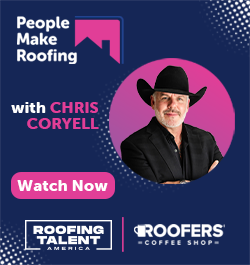
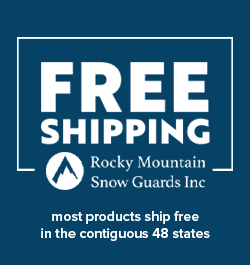
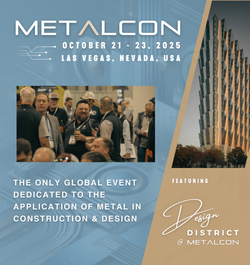
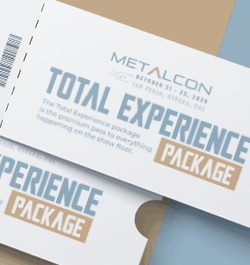








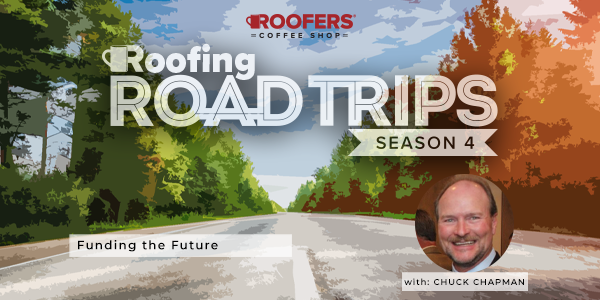
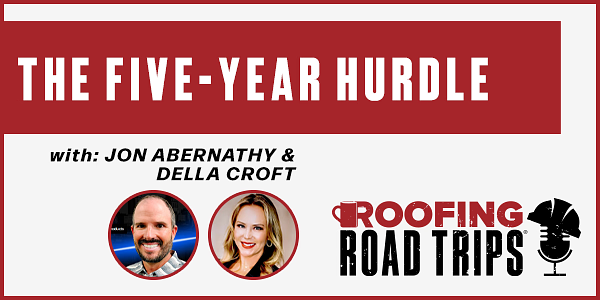
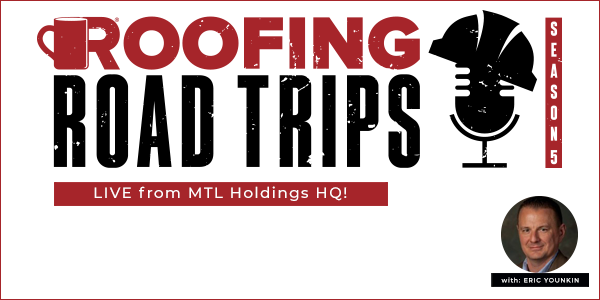



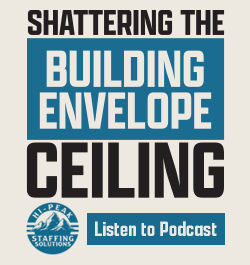

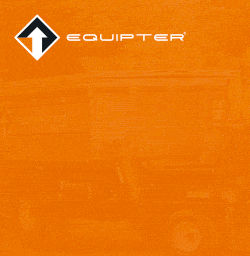
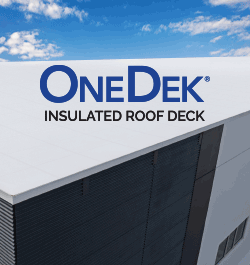
Comments
Leave a Reply
Have an account? Login to leave a comment!
Sign In